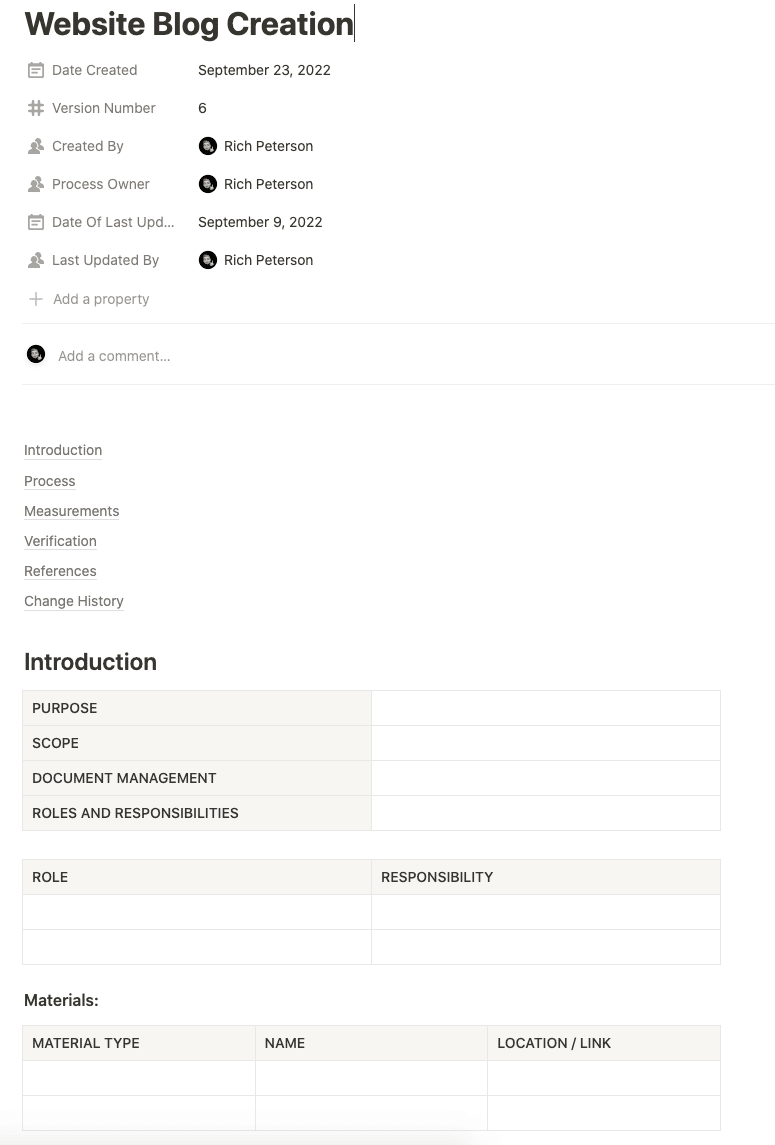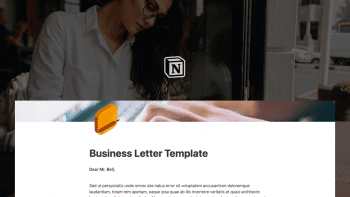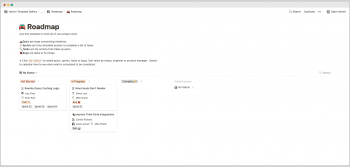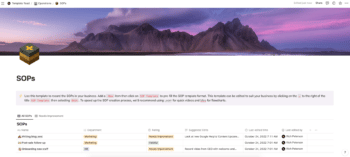Process documentation is essentially a collection of documents that provides information about how specific processes work within a business.
Contents
Notion – Process Documentation Template
Process documentation is a collection of documents that provide information about how specific processes work within a business. Create a formal business process document using this outline. The template includes typical sections for documentation — including process purpose, flow, roles, and other details — and can easily be edited to suit your particular needs. Simple formatting makes this template easy to use and share with team members, stakeholders, and other interested parties.
——————————————-
What you need before purchase
- Basic knowledge of how to use Notion
- Paid Notion account if you want to add lots of content to your template / Notion account (sign up here). Not much content? You’re able to use their free account.
——————————————-
After purchase
After purchase, you’ll be able to view the template immediately. The template can added to your Notion account by:
- Click on the template download link in Gumroad
- When viewing the Notion template, click on the “Duplicate” link in the top-right of your screen
- The template will now be available in your own Notion account
For ongoing use, the steps are:
- Login to Notion and select the template you want to view
- Click on the Duplicate link in the top-right of your screen to create a copy to use
- You’ll be able to retain the Notion template and work on the Duplicate (with a new name) and can repeat this process whenever you want to use the template again
What Is Process Documentation?
Process documentation is the process of documenting a company’s business processes in order to ensure that they are being followed correctly and consistently. It can be used as a tool for improving efficiency, reducing costs, and ensuring compliance with regulations. The goal of process documentation is to make sure that the steps involved in each process are clearly defined so that everyone understands what their role is within the process. This helps to avoid confusion and miscommunication when working together on projects or tasks.
The most common types of process documentation include:
- Business Process Modeling Notation (BPMN) – A graphical notation that describes how an organization’s workflow should operate. BPMN was developed by IBM in 2004 and has since become one of the most widely accepted methodologies for describing workflow processes.
- Activity Diagrams – An activity diagram is a visual representation of a process flow that shows all of the activities involved in completing a task. They are often used to show the sequence of events that occur during a project or task.
- Flowcharts – A flowchart is a diagram that illustrates the flow of information through a system or process. Flowcharts are commonly used to illustrate the flow of data from one step to another.
- Workflow Maps – A workflow map is a diagram that represents the structure of a business process. These diagrams usually consist of boxes representing individual steps in a process and arrows connecting them.
- Task Lists – A task list is a collection of items that need to be completed before a certain date. Each item is assigned a due date and a person who needs to complete it. Task lists are typically created using Microsoft Project or similar software.
- Workflow Templates – A template is a set of instructions that describe how a particular type of process should be carried out. For example, a sales template might outline the steps needed to close a sale.
- Business Rules – A business rule is a statement that defines a condition under which something must happen. For example, if a customer’s account balance falls below $100, then the bank may automatically transfer money into his or her checking account.
- Workflows – A workflow is a series of actions that must be performed in order to achieve a specific result. In other words, a workflow is a set of rules that define how a process will be carried out. There are many different types of workflows, including:
- Sequential – Sequential workflows follow a strict order of operations. They start at the beginning and end at the end.
- Parallel – Parallel workflows allow multiple people to perform the same task simultaneously. They do not have any strict order of operation.
- Independent – Independent workflows are those where there is no logical relationship between the steps required to complete a task.
- Hybrid – Hybrid workflows combine elements of both sequential and parallel workflows.
What are the benefits of process documentation?
Process Documentation is a vital part of any business, as it provides an overview of how you do things and what steps need to be taken in order for them to work effectively. It also helps to ensure that everyone involved understands their role within the process and can therefore carry out their tasks efficiently.
How To Document Your Business Processes
There are many different ways to document your business processes, but they all have one thing in common – they help to make sure that everything runs smoothly. If you don’t know where to begin when it comes to documenting your business processes, here are three tips which will hopefully get you started:
1. Start with the end in mind
Before you even think about starting to document your business processes you should always consider what you want from the finished product. This could include anything from being able to easily find information about your company or products, to having a clear understanding of what each step involves. Once you know exactly what you want from the final result, you can start thinking about how best to achieve it.
2. Use templates
Templates, like the template above (set up in Notion), are great because they allow you to create documents quickly and easily. They also save time by making sure that you only have to fill in the relevant details once instead of doing it over and over again. You can use templates for almost every type of document you might need, including letters, reports, invoices and more.
3. Keep it simple
When you first start documenting your business processes, it’s easy to get carried away with adding lots of extra detail. However, if you try to add too much information, it may become difficult to understand what’s going on. Instead, focus on keeping things simple and concise. For example, rather than writing down every single step of a particular task, just write down the main points. Then, if there’s something else you need to say later, you can expand upon those points.
Roles in process documentation
Once you’ve decided how you want to document your business processes it’s time to think about who needs to be involved. There are two types of people who play key roles in process documentation:
- The person responsible for carrying out the task
- Anyone who needs to follow the instructions
The person responsible for carrying out a task is known as the ‘task owner’. He/she has ultimate responsibility for ensuring that the task gets done correctly, and he/she must also take into account any other factors such as deadlines, budgets, resources etc. When it comes to documenting your own business processes, the person who owns the task is usually the same person as the person who carries out the task.
The second group consists of anyone who needs to follow the steps outlined in the documentation. These people are known as ‘process stakeholders’. Stakeholders are often employees, customers, suppliers, partners or others who need to see the documentation in order to carry out their work efficiently. It’s important to remember that not everyone who needs to read the documentation will necessarily act on it. So, while you may want to keep the documentation short and sweet, it’s still essential that you provide enough information so that everyone knows what to do next.



















